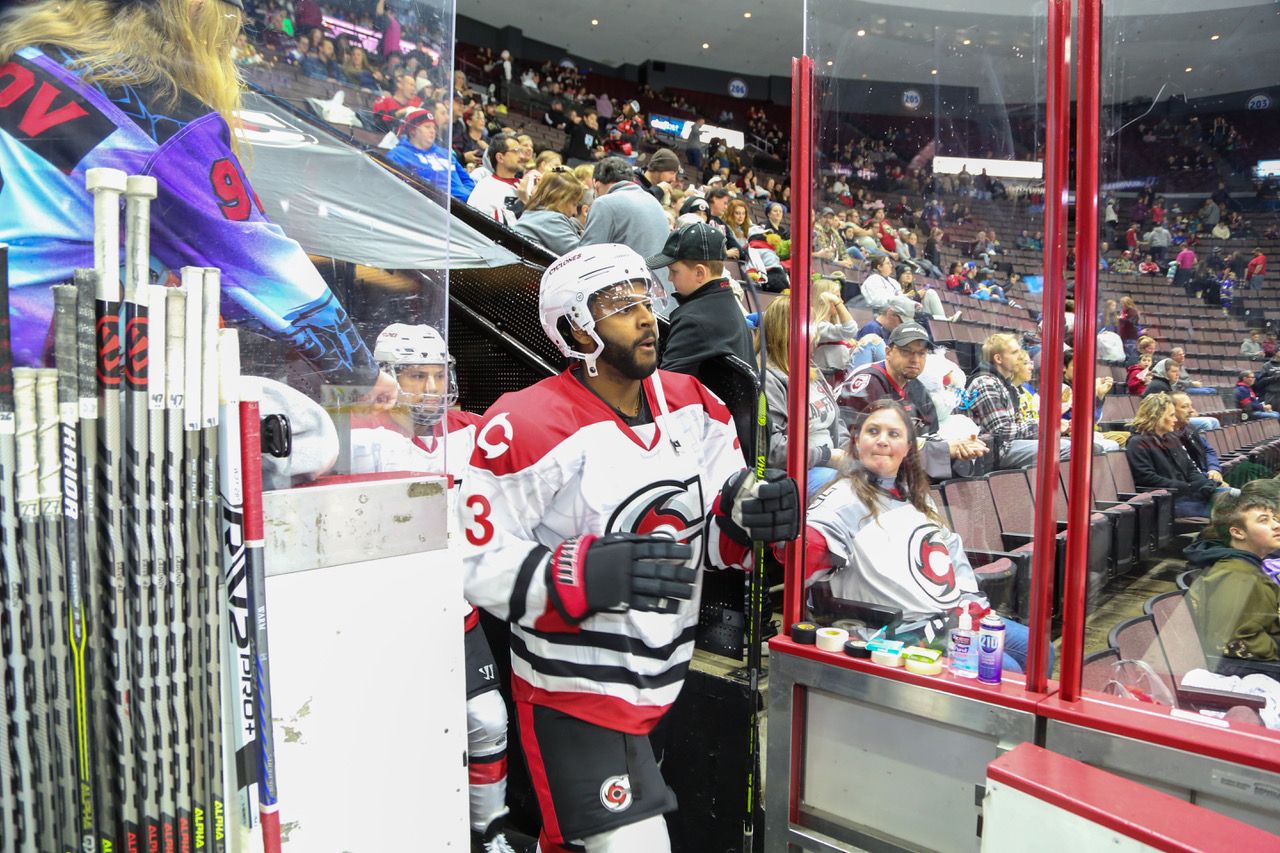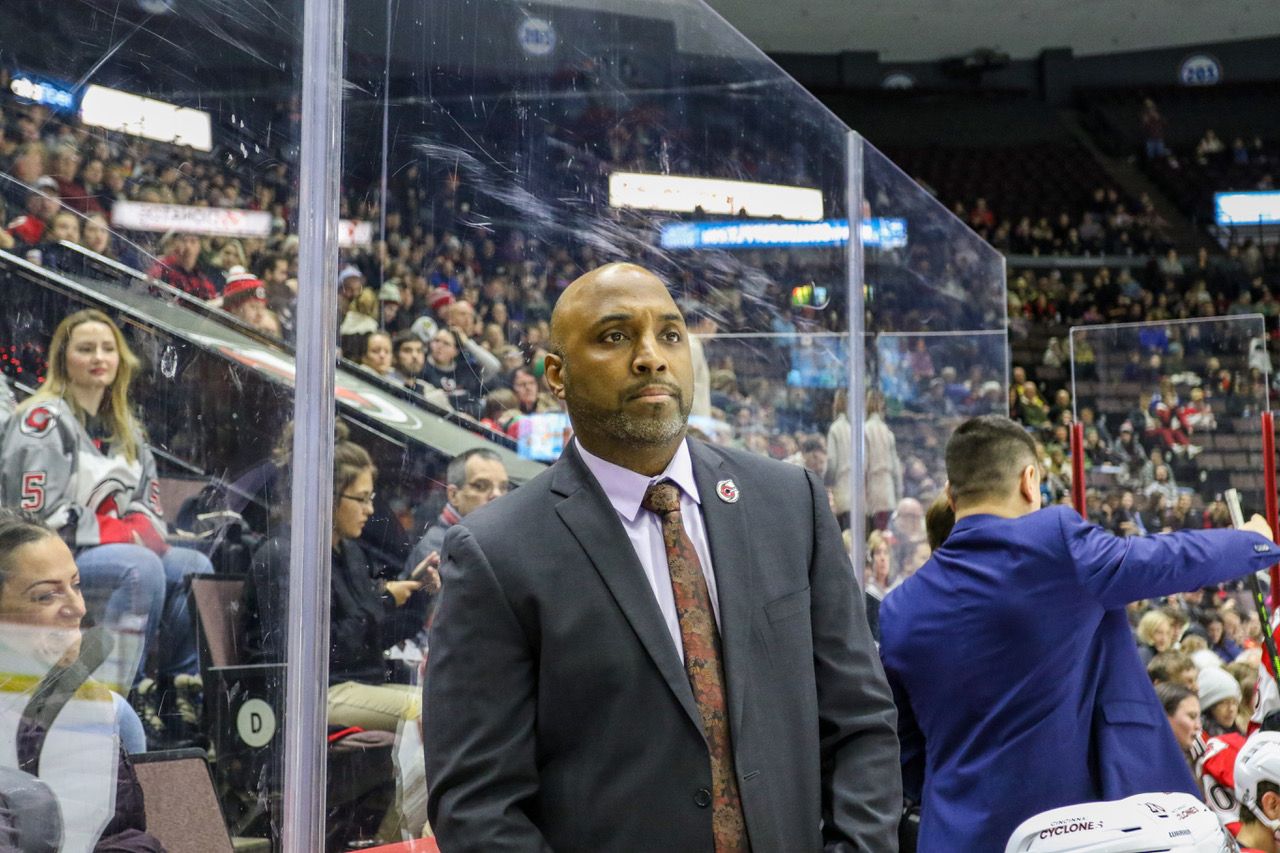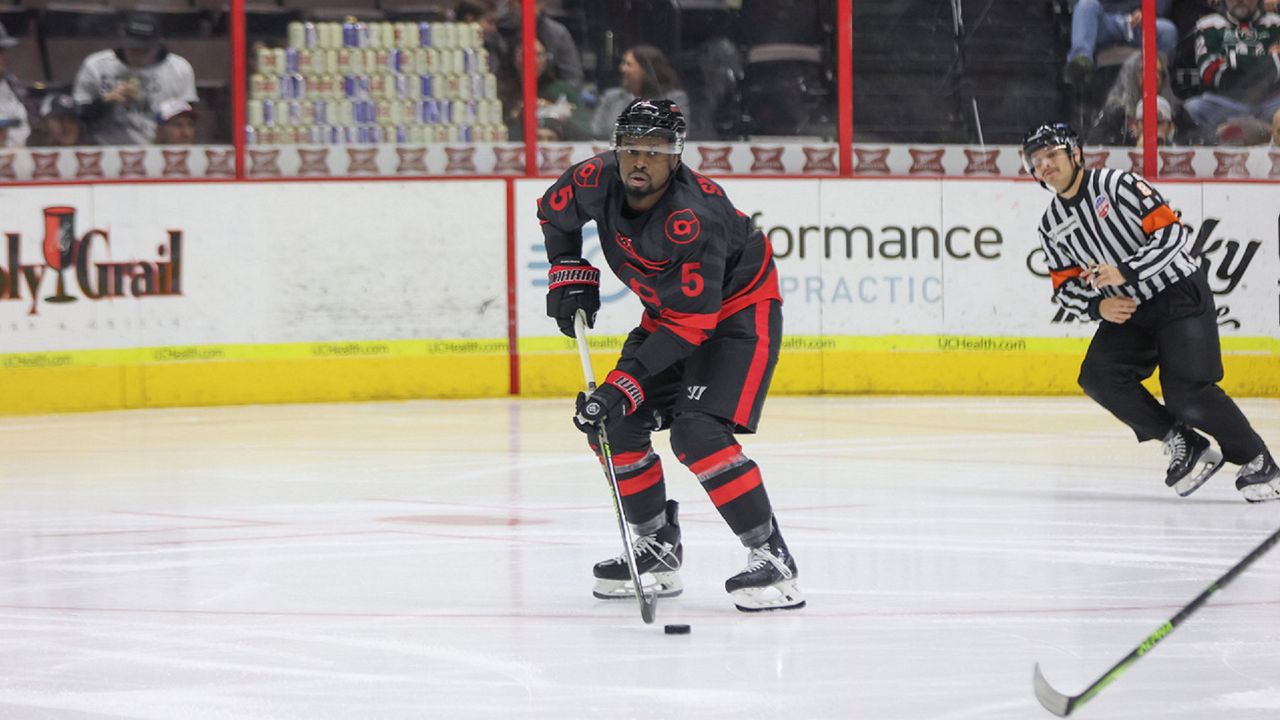CINCINNATI — Cincinnati Cyclones defenseman Jalen Smereck grew up in a hockey family in Detroit.
His father loved the sport and passed that passion onto him, coaching him and his brother in youth hockey, Smereck said. But despite growing up in the city fondly referred to as Hockeytown, the sport didn’t reflect Smereck or his family.
Smereck is African American.
The 26 year old didn’t see many players who looked like him when watching the Red Wings or other National Hockey League clubs as a kid. Just as importantly, he said, there weren’t many Black players with him on the ice or in the locker rooms when he was learning to play the game.
The Associated Press reported in October that more than 90% of the players in the NHL are white, as are nearly all coaches and officials. Numbers across minor-league hockey aren’t much different.
Now, as one of three Black players on the Cyclones’ 22-man roster, Smereck is serious about his job as a role model for Black fans who dream of playing hockey at the highest level. He also wants to help attract a new audience to the sport.
“It’s definitely unique,” Smereck said of the Cyclones’ locker room. “We all want to be great hockey players, but I think we also understand we have a lot of younger fans who are looking up to us.”
What You Need To Know
- The Cincinnati Cyclones have three Black players on their 22-man roster
- Roughly 90% of current NHL players are white
- The team's coach, who is also Black, believes the players can be important role models for non-white athletes who dream of being professional hockey players
Throughout the season, Smereck will often be paired with fellow defensemen Dajon Mingo or Josh Burnside, both of whom are Black. The trio has helped the Cyclones earn a tie for first place in the ECHL’s Central Division heading into the final two months of the regular season.
Mingo, who’s from the greater Detroit area, was the only Black player on the Cyclones’ roster to start last season. The team also had Yushiroh Hirano, who later that season became the first Japan-born player to score a goal in the American Hockey League.
Burnside joined the Cyclones mid-season last year. This is Smereck’s first season playing for Cincinnati.
“This is a cool place to play,” Mingo said. “We have a good locker room and a great group of guys who love his game and love playing together. That said, having someone who looks like you in the locker room is nice because you’ve gone through some of the same things on and off the ice.”

Mingo is older than some of his peers. The 32 year old said it was rare to see another non-white player in the youth hockey leagues in the early ‘90s or 2000s.
He recalled traveling with teams in the past and having them be mistaken for a basketball squad because people weren’t used to seeing Black hockey players.
The sport has grown in recent years, especially in the United States, Mingo said. But he feels there’s still work to do.
“I’ve been the only (Black player) before and it can be weird,” he added. “Obviously, you’re all there because you love hockey, but having someone who’s gone through similar things in life, it’s different.”
Having a diverse roster is bigger than just in the locker room, though, Mingo said. He noted that a lot of the team’s fans are younger. Having players who look like them and come from similar backgrounds is important, Mingo said.
“It’s great to look in the crowd and see young kids having fun and enjoying the game of hockey,” he added. “Who knows? They could be out here playing someday.”
Burnside had a different experience growing up in Canada. Youth hockey was “a lot more diverse” in Brampton, Ontario, just outside Toronto, he said. But even then, there were other challenges ranging from a lack of diverse stars in the game to socioeconomic challenges that keep people from deciding to play hockey, he said.
“Our first job is to help our club win games, obviously, but I think we all understand that sometimes when people look at us, they see more than just hockey players,” said Burnside, 28.
Jason Payne, the Cyclones’ head coach, knows firsthand the experiences of being a Black person in pro hockey. The former left winger bounced around several minor-league hockey organizations during a 14-year career before moving into coaching.
Regardless of where he played — whether it was London, Ontario, or Wheeling, W. Va. — Payne was likely the only player of color on his team.
“Everyone in our locker room is a tremendous hockey player, first and foremost. They wouldn’t be here if they couldn’t play,” Payne said. “But being able to show that this is a game for everyone is important, and these guys help show that.”

The NHL had only 54 active players who were Arab, Asian, Black, Latino or Indigenous last season. And the numbers are even smaller in the coaching ranks.
Payne is one of only a handful of Black men to coach a professional hockey team. But he hopes things are changing on that end.
Earlier this season, Payne and Kalamazoo K-Wings’ first-year head coach Joel Martin made history by becoming the first Black man to coach against another in North American professional hockey history.
Payne said he enjoys talking about race and diversity in hockey because it’s the only way to change the sport.
“It’s something we don’t take lightly,” he said. “Hopefully, these guys can show young players that if they work hard, they can get here, too.”
Diversity is a key part of the Cyclones culture, according to Kristin Ropp, the franchise’s vice president and general manager. She noted it’s good to give young fans heroes to idolize, but it’s also important to company culture, she said.
“We live the hockey is for everyone mantra,” Ropp added. “If a player can play our brand of hockey and plays it with character and integrity, he has a place in our locker room.”
Broadening the demographics of their fan base is good for business and the game, Ropp said.
To that end, the franchise formed the Cincinnati Cyclones Foundation in Dec. 2016. The foundation assists youth players with the costs associated with playing the sport. They provide equipment and ice time, whether at their home rink at Heritage Bank Center or other hockey or skating facilities around Cincinnati and Northern Kentucky.
The club also hosts regular clinics and meet-and-greet events at local schools throughout the region. They also invite groups of students to the games.
Payne stressed a desire to promote the game to attract more people to the game — whether it’s as fans and players or the next generation of general managers, scouts and coaches.
“We all love hockey. Our major goal is to make sure kids see hockey as a potential opportunity so they can fall in love with it as well,” he added.



